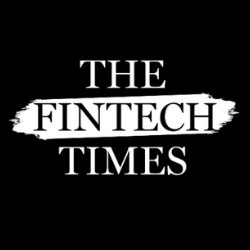The popularity of cryptocurrency has overshadowed blockchain to the point that a misconception has been formed: blockchain’s sole purpose is to facilitate cryptocurrencies. While this is certainly one blockchain use case, it has many more that are not being properly utilised due to the public nature of mainstream blockchains.
One organisation exploring some of these use cases is the Midnight Foundation, an organisation dedicated to advancing the development, adoption, and real-world impact of the Midnight network. The Midnight network is designed for confidential smart contracts, enabling censorship-resistant yet compliant decentralised applications.
Delving into how the Midnight Foundation is unlocking the full potential of blockchain technology through programmable privacy, Fahmi Syed, president at Midnight Foundation spoke to Mark Walker, editorial director, The Fintech Times, at Money20/20 Europe 2025 in Amsterdam.
The missing piece for mass blockchain adoption
Midnight was originally created as a research project with Input Output Hong Kong (IOHK), the blockchain infrastructure research and engineering company behind Cardano, and was strongly backed by Charles Hoskinson, IOHK’s founder and one of the original CEOs of the Ethereum foundation and Ethereum project.
Despite its growing use as a buzzword in the financial sectors, blockchain’s real-world adoption was yet to be seen. The masses weren’t flooding to use the tech and Hoskinson concluded that one major reason for this was the absence of identity and privacy.
“Everything on the blockchain is immutable and transparent,” says Syed. “It’s great because it provides freedom and removes intermediation, but it does mean everything you do will always be on a chain.
“What Bitcoin introduced to the world was fantastic – it showcased decentralised finance, decentralised ledgers and the freedom to share information in a way that could avoid fraud, double spending and overall increase transparency.
“Unfortunately, people have focused too much on the crypto side of things. We haven’t seen real-world adoption in banking, logistics or many other enterprise use cases.”
Privacy’s role in enhancing adoption
Blockchains today fit into one of two categories: public or private. Private blockchains are often created by banks but suffer due to their siloed nature, which can result in lower liquidity and interactions with other banks and blockchains. Meanwhile, public blockchains give permissionless access but lack the ability to verify who is interacting with the blockchain – as a result, large enterprises often steer clear.
“At Midnight, we’re creating the concept of programmable privacy,” says Syed. “Our blockchain is neither public nor private – we’re in a grey area between both these established concepts.”
Midnight offers users the ability to have both a public and private state on the blockchain and dictate who can and cannot see certain information. Exploring a use case where this choice is useful, Syed explains how in the trading sector, either DeFi or central exchange trading, everything is visible. Every trade can be seen and simply moving collateral can signal the position or intentions of a company to its competitor.
“What we aim to do at Midnight,” continues Syed, “Is grant users the ability to hold assets privately. You issue them publically, then trade and hold them privately. Users can then disclose information to counterparts for collateral, borrowing, or leveraging purposes.”
Retaining ownership over data
Syed explores the differences between a bank looking after your assets and the Midnight offering. “A bank is centralised. The blockchain technology that Midnight is offering holds data but enables users to present it to other parties.”
He notes that the actual data is never on-chain. Midnight enables users to take data off-chain or on other chains and present it as zero-knowledge proof on the Midnight blockchain. This allows them to retain custody and ownership of the data, which they can then share with larger enterprises when they wish to.
The key to mainstream adoption
While the Midnight network has been worked on for six years, the Midnight Foundation was only launched earlier in 2025. Supported by Shielded Technologies and new firms coming into the equation, the Midnight Foundation has identified identity, logistics and stablecoins to be areas of high adoption. Real-world assets (RWAs) and stablecoins have emerged as key trends and Midnight’s role in facilitating these will open it up to adoption from large enterprises.
Syed provides an example of how Midnight can be used by exploring how Coca-Cola might want to use a stablecoin to move revenues from Mexico back to its headquarters in the US. Using a current-day public blockchain, anyone could see the value of the money moved. However, using Midnight, Coca-Cola would be able to show public characteristics of the transaction while holding back the specifics. This means competitors like Pepsi won’t be able to see cash flow and identify trends in certain regions.
What’s next?
Reflecting on his experience at Money20/20 Europe 2025, Syed comments on what he is most excited about being at the event. “Walking around, I have seen a lot of traditional payment rails and I think about how they could unlock their true value using blockchain. They can move towards a world which enables them to act as platforms that allow individuals to own their data and assets.
“What we’re offering at Midnight is an opportunity to reduce costs through how you handle data and compliance regulations.”
Watch for more in-depth insight as Mark Walker chats to Midnight Foundation’s Fahmi Syed


